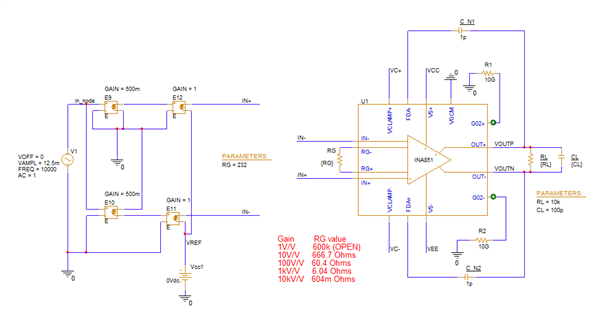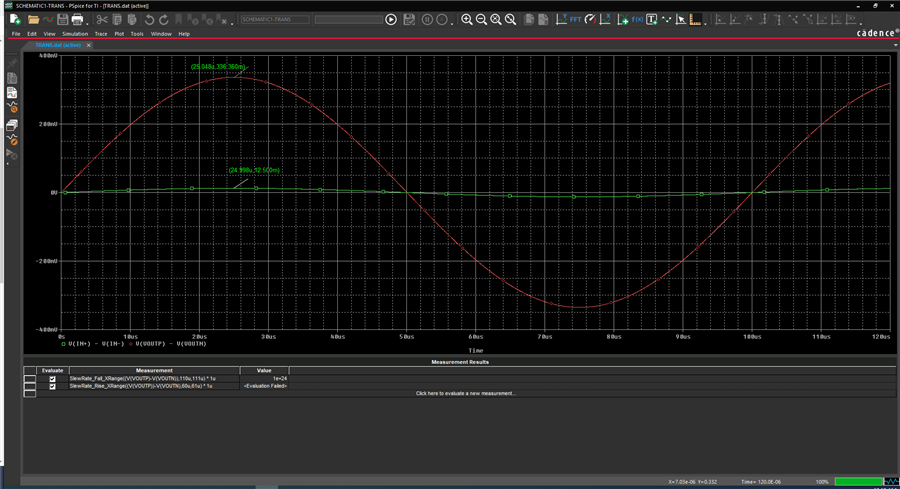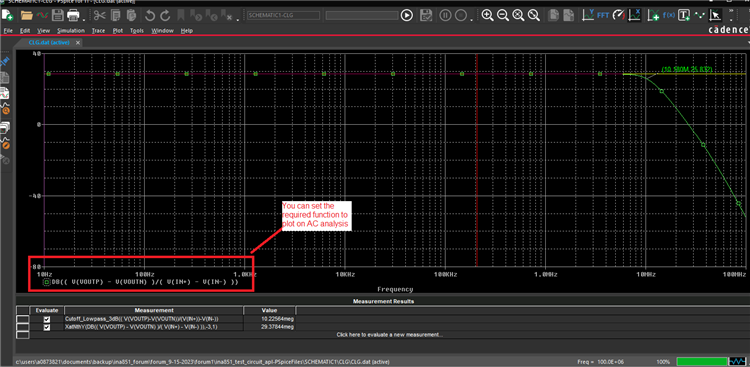Hello,
I am getting strange voltages in my simulation for the INA851 amplifier. I am trying to simulate a differential signal with an amplitude of 12.5mV on the left side of my circuit. I expect an amplification of 26.86 due to the 232Ohm resistor, so all in all the output voltage should be 335.7mV. However, the output voltages are only half that. Is this because I have a differential output and if so can I just connect the outputs in an analog to digital conversion and the voltage will automatically double internally? Or did I miss something in my simulation?
Thank you so much!






